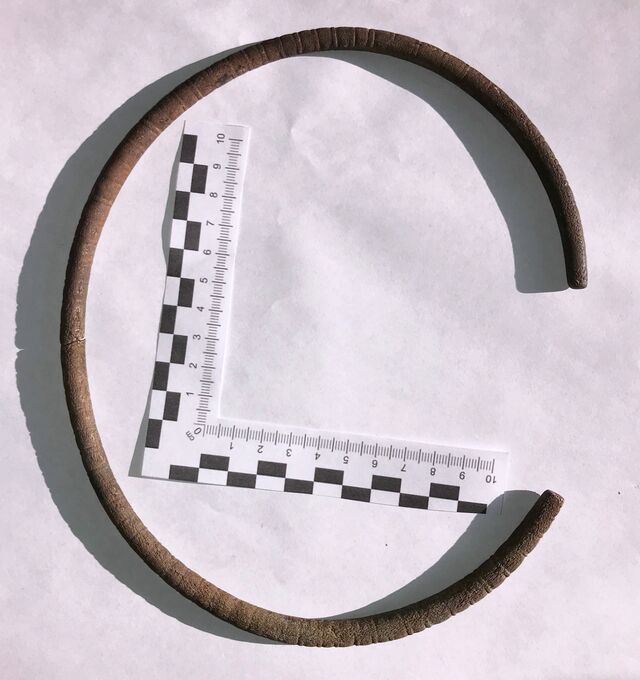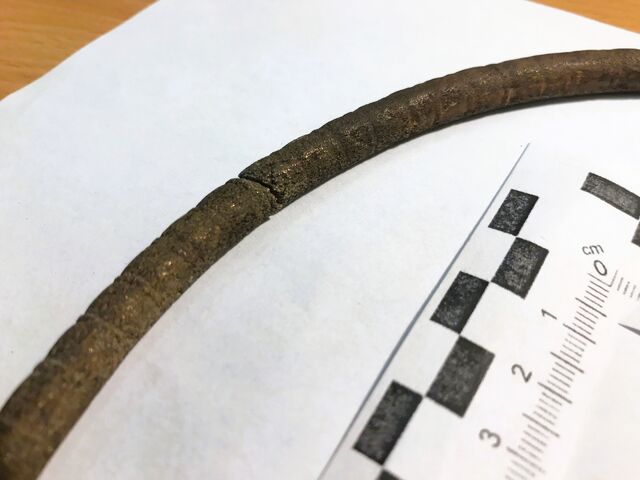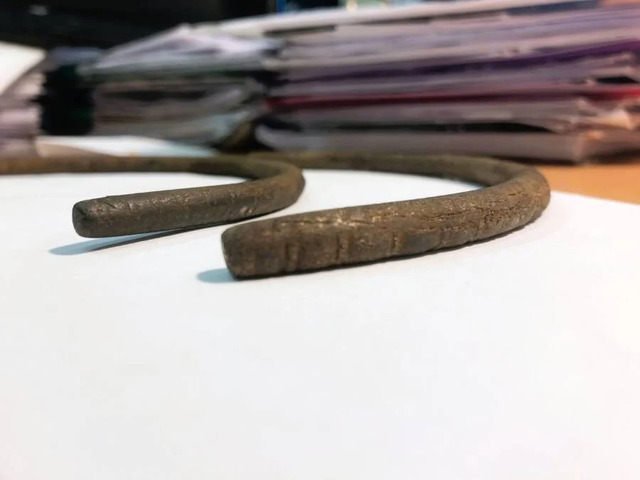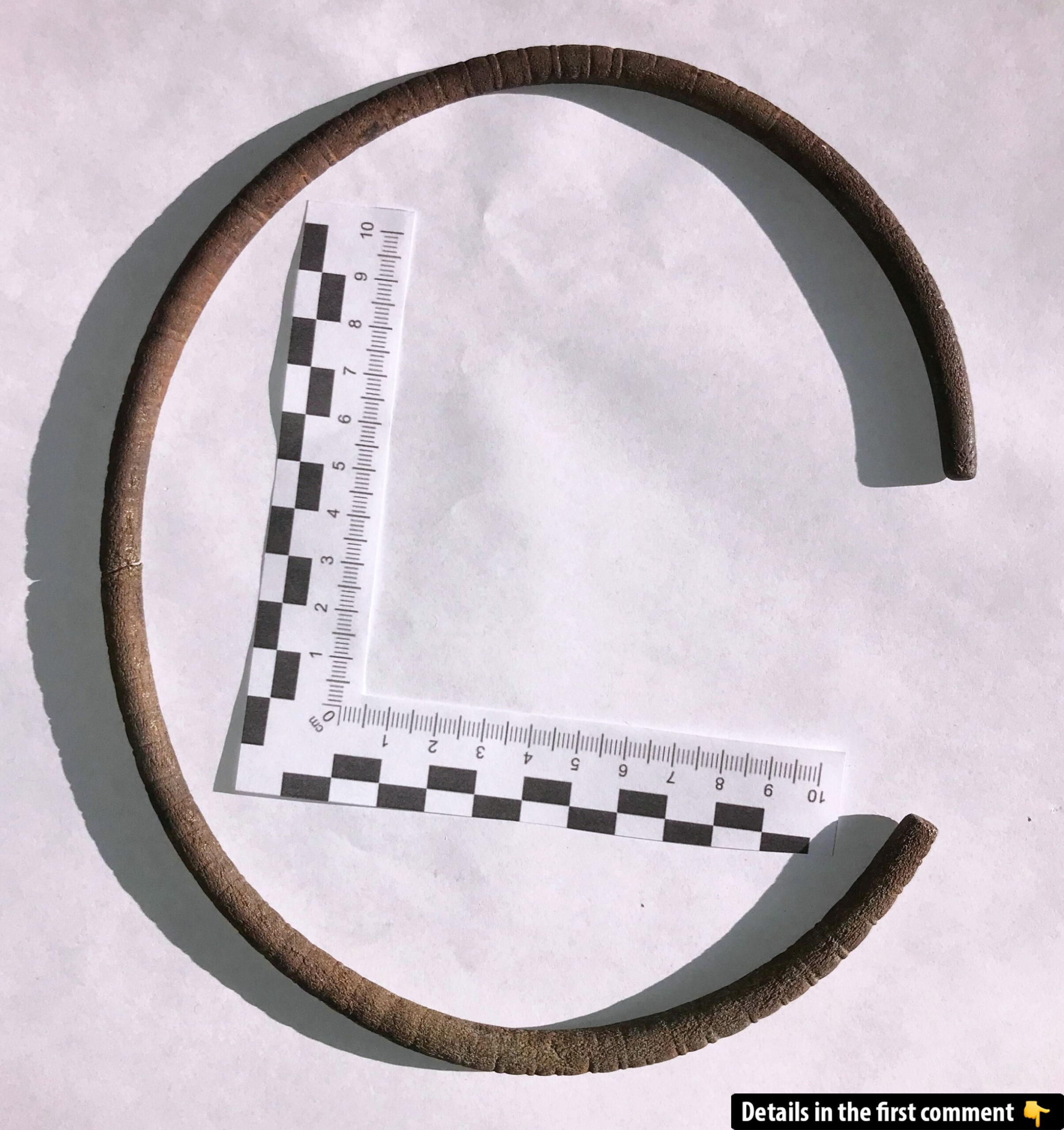In January 2025, a simple act of clearing a cattle pasture led to the discovery of an extraordinary relic from 2,500 years ago. A farmer’s son in the village of Bartosze, Poland, unearthed a rare bronze necklace, offering a fascinating glimpse into a pivotal moment of European history. This 2,500-year-old artifact, dating back to the Hallstatt C period, unveils the intricate craftsmanship and cultural significance of an era transitioning from the Bronze Age to the Iron Age.
The Hallstatt C Period: A Time of Transition
The Hallstatt C period, which spanned from around 800 to 600 BCE, marks a crucial transitional phase between the Bronze Age and the Iron Age in Europe. This era witnessed the rise of iron tools and weapons, which slowly replaced their bronze counterparts, ushering in a new age of technological advancements. For the communities of the region, including the Lusatian and West Baltic Kurgan cultures, this transition wasn’t just about new materials—it represented a shift in social structures, economic practices, and cultural identities.
In Poland, this period is closely associated with the Lusatian culture, known for its well-developed settlement structures, fortified sites, and material wealth. The artifacts from this time reveal a society that was increasingly complex, with evidence of social stratification and the development of elite groups. The discovery of the bronze necklace offers a tangible connection to this era, providing archaeologists with important clues about the people who lived during this transformative time.
The Necklace: Craftsmanship and Design

The necklace itself is a masterpiece of ancient craftsmanship, made from a single bar of bronze bent into a circular shape. Its design is simple yet elegant, decorated with a double groove pattern that runs along its entire length. The grooves, carefully etched into the bronze, reveal the skill of the artisans who created the piece, suggesting that the necklace was not only a functional object but also a symbol of cultural significance.


The circular shape of the necklace is reminiscent of a torc, a type of jewelry commonly worn by ancient European cultures. The use of bronze, a material highly valued during the Hallstatt C period, further highlights the craftsmanship involved in its creation. The clean break in the necklace, discovered when the farmer’s son found it, has allowed for a perfect reconstruction of the item, offering an invaluable opportunity to study its form and function.
Video
Watch Must Farm Bronze Age Settlement to explore this remarkable archaeological site and its incredible discoveries. A fascinating look into ancient life!
Discovery Location: The Role of Bartosze, Poland

The location of the discovery, in the village of Bartosze, is significant in its own right. Bartosze is situated in the Warmian-Masurian Voivodeship, an area with a rich archaeological history. This part of Poland was home to various ancient cultures, including the Lusatian and West Baltic Kurgan peoples, who left behind traces of their settlements, burial sites, and artifacts. The discovery of the necklace adds to our understanding of the region’s role in the larger context of European prehistory.
The fact that the necklace was found in a field being cleared for farming underscores the potential for significant archaeological finds in unexpected places. This discovery also highlights the importance of local knowledge and the involvement of the community in safeguarding and reporting such finds, as the farmer’s son quickly recognized the importance of the object and handed it over to authorities.
Archaeological Significance: A Rare Find

The bronze necklace is a rare find, particularly in the context of the Hallstatt C period. While artifacts from this era are often uncovered in various forms—such as tools, weapons, and pottery—objects of personal adornment like necklaces are far less common. The fact that this piece was well-preserved and found intact offers a unique opportunity for archaeologists to study the artistry and technology of the time.
What makes this discovery even more remarkable is the absence of similar items from the same period in the region. While a few other artifacts, such as axes and clasps, have been found, they typically date to the later Roman period. This necklace, therefore, fills an important gap in the archaeological record, providing valuable insights into the cultural practices of the people who lived in Poland during the late Bronze Age and early Iron Age.
Technological and Social Insights
The bronze necklace is not just an object of beauty; it also offers insights into the technological and social practices of the Hallstatt C period. The craftsmanship involved in making the necklace demonstrates the skill of ancient metalworkers, who were capable of creating intricate designs using only the basic tools available at the time. The presence of a double groove pattern suggests a high level of technical expertise, as the grooves were carefully etched into the bronze to create a symmetrical design.

Beyond its technical aspects, the necklace also sheds light on the social dynamics of the time. The necklace’s design and material suggest that it may have been worn by someone of high status within the Lusatian or West Baltic Kurgan cultures. In these societies, objects of personal adornment were often used to signify social rank and prestige. The discovery of this necklace, therefore, may provide clues about the social hierarchies and cultural practices of the people who lived in the region.
The Necklace’s Journey: From Discovery to Preservation
Once the necklace was discovered, it was carefully handed over to the Provincial Office for the Protection of Monuments in Olsztyn, where it was analyzed and dated to the Hallstatt C period. The next steps involve further scientific analysis, particularly to examine the metal content of the necklace. This will help determine the specific composition of the bronze and provide more information about the metallurgical practices of the time.
Following this analysis, the necklace will be preserved and eventually displayed in a local museum, where it can be shared with the public and future generations. The careful preservation of the artifact is crucial to ensure that it remains intact for further study and public enjoyment.

Archaeology’s Role in Understanding Ancient Societies
This discovery highlights the critical role of archaeology in understanding ancient societies. Archaeological findings like this necklace provide us with tangible evidence of the past, allowing us to piece together the daily lives, customs, and technologies of long-lost cultures. The study of such artifacts not only enriches our understanding of history but also fosters a deeper appreciation for the complexity and sophistication of ancient civilizations.
Conclusion: Connecting the Past and Present
The discovery of the 2,500-year-old bronze necklace in Poland serves as a powerful reminder of the rich cultural heritage that lies buried beneath the surface of our everyday lives. As archaeologists continue to study this remarkable artifact, it will undoubtedly provide new insights into the lives of the people who lived during the Hallstatt C period. For now, it stands as a testament to the skill, creativity, and resilience of ancient cultures, connecting us to a distant past and reminding us of the enduring legacy of those who came before us.
Video
Watch ‘Incredible Find’ – Bronze Age Fortress Discovered in Co Galway to learn about this remarkable discovery in Ireland’s ancient past. Don’t miss it!



